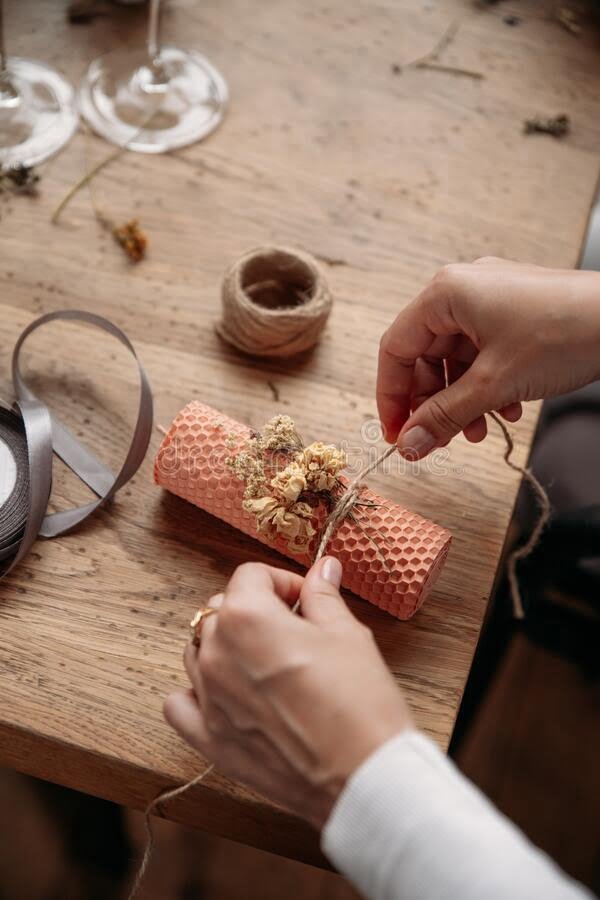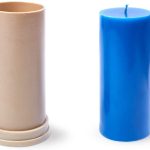Cleaning your candle making supplies is a crucial step in ensuring the quality of your candles and extending the lifespan of your equipment. Just like any other craft or hobby, maintaining cleanliness in candle making has several benefits that go beyond aesthetic value.
First and foremost, cleaning your candle making supplies helps to prevent cross-contamination. Residue from previous candles can mix with new wax, altering the scent or color of your next creation. By properly cleaning your supplies, you eliminate this risk and maintain the integrity of each individual batch.
Furthermore, regular cleaning promotes efficiency and organization. When your workspace is clutter-free and all tools are clean and ready to use, you save time searching for what you need and reduce the chances of accidents or mistakes. A clean workspace also enhances creativity by providing a fresh starting point for each new candle-making session.
In this article, we will guide you through the process of effectively cleaning your candle making supplies. From gathering the necessary cleaning supplies to removing stubborn wax stains, we will cover everything you need to know to keep your equipment in optimal condition. So let’s get started on creating a sparklingly clean environment for your candle making endeavors.
Gathering the necessary cleaning supplies
To effectively clean your candle making supplies, it is important to gather the necessary cleaning supplies. Having the right tools at hand will make the cleaning process more efficient and ensure that your supplies are thoroughly cleaned and ready for reuse. Here is a detailed list of the cleaning supplies you will need:
- Hot water: Hot water is essential for melting away wax residue from your melting pot, containers, and tools. Make sure the water is hot enough to dissolve the wax but not boiling, as extreme heat can damage some materials.
- Dish soap: Use a mild dish soap to cut through grease and remove any residual wax on your containers and tools. Look for a gentle formula that won’t leave behind a soapy residue.
- Scrub brush or sponge: A scrub brush or sponge with abrasive bristles can help remove stubborn wax residue from your melting pot, containers, and tools. Choose a brush or sponge that is appropriate for the material you are cleaning to avoid scratching or damaging the surface.
- Microfiber cloths: Microfiber cloths are great for wiping down surfaces without leaving behind lint or streaks. They are ideal for removing wax stains from countertops, work areas, and equipment.
- Isopropyl alcohol: Isopropyl alcohol is an effective solvent for removing wax stains from surfaces and equipment. Use it sparingly and only on non-porous surfaces as it may damage certain materials.
- Cotton swabs: Cotton swabs are useful for getting into tight grooves and crevices where wax residue can accumulate. They provide precision when cleaning small tools or hard-to-reach areas.
- Cleaning gloves: Protect your hands by wearing cleaning gloves while handling hot water or strong cleaning solutions. Choose gloves made of durable materials that can withstand high temperatures if necessary.
By gathering these essential cleaning supplies before starting the cleaning process, you will be well-prepared to tackle any wax residue and ensure that your candle making supplies are clean and ready for future use.
Preparing the workspace
Cleaning your candle making supplies is not only about removing wax residue, but it also involves creating a clean and organized workspace. A clutter-free and well-prepared area will help you clean your supplies more efficiently and maintain better organization in your candle making process. Here are some tips on how to set up a proper cleaning area:
- Clear the space: Before starting the cleaning process, clear your workspace from any unnecessary items or materials. Remove any leftover candle wax, empty containers, or tools that are not required for cleaning. Having a clear workspace will make it easier to focus on the cleaning task at hand.
- Gather cleaning supplies: As mentioned earlier in the article, gather all the necessary cleaning supplies before setting up your work area. This may include dish soap, warm water, sponge or scrub brush, vinegar, baking soda, paper towels or rags, and gloves for protection. It’s important to have all these items readily available for an efficient cleaning process.
- Use separate containers: To ensure proper organization during the cleaning process, use separate containers for different purposes. Have a container designated for collecting dirty tools and another one solely for collecting wax residue from containers and melting pot. This will prevent cross-contamination of materials and make it easier to dispose of waste appropriately.
- Provide adequate ventilation: Cleaning candle making supplies may involve using certain chemicals like vinegar or specific solvents that emit strong odors. To ensure safety and comfort during this process, make sure you have proper ventilation in your workspace. Open windows or use fans to circulate fresh air while working.
Follow these tips to set up a clean and organized workspace for efficient candle making supply cleaning. Having a well-prepared area will not only make the task easier but also contribute to maintaining cleanliness throughout your candle making journey.
Sources
- “Tips for Cleaning Candle Making Equipment” – National Candle Association
- “How-to: Clean and Sanitize Your Crafting Area” – Craft Organization
- “Cleaning Supplies Checklist” – The Spruce
Cleaning the melting pot
After each candle-making session, it is crucial to clean your melting pot thoroughly to ensure the removal of any leftover wax residue. Cleaning the melting pot not only maintains its functionality but also prevents cross-contamination and preserves the quality of future candle batches. Here are step-by-step instructions on how to effectively clean your melting pot:
- Allow the melting pot to cool down: Before starting the cleaning process, make sure that the melting pot has completely cooled down. Attempting to clean a hot pot may pose safety risks and can damage the pot.
- Remove any excess wax: Using a heat-resistant spatula or scraper, gently scrape off any residual wax from the sides and bottom of the melting pot. Be careful not to scratch or damage the surface of the pot while doing this.
- Wipe off loose particles: Take a soft cloth or paper towel and wipe away any loose particles or debris from the interior of the melting pot. This will help remove any remaining wax fragments that were loosened during scraping.
- Heat water in the melting pot: Fill the empty melter about halfway with water and heat it on low or medium-low heat until it starts simmering. The steam generated by hot water helps soften and loosen stubborn wax residue.
- Scrub with a sponge or brush: Once the water is simmering, dip a non-abrasive sponge or brush into it and start scrubbing the interior surfaces of the melting pot. Focus on areas with visible wax residue, ensuring thorough coverage.
- Rinse and repeat if necessary: After scrubbing, rinse off all soap residue and check for any remaining wax traces. If needed, repeat steps 4 and 5 until all traces of wax have been removed.
By following these step-by-step instructions, you can effectively clean your melting pot and remove any leftover wax residue. Ensuring that your melting pot is clean before starting a new candle-making session will not only contribute to the overall quality of your candles but also prolong the lifespan of your equipment. Remember, proper maintenance leads to better results.
Cleaning the containers
One of the important steps in cleaning your candle making supplies is properly cleaning the containers. Whether you are reusing old candle jars or using new ones, it is essential to remove any wax remnants before starting a new project. Cleaning the containers not only ensures that your candles have a clean and polished appearance but also prevents any unwanted residue from affecting the quality of your new candles.
To effectively clean candle containers, here are some techniques you can follow:
- Freezing method: One popular technique for removing leftover wax from candle containers is by freezing them. Simply place the container in the freezer for a few hours until the wax becomes brittle and hard. Once frozen, use a butter knife or a spoon to gently pry off the wax from the sides and bottom of the container. The frozen wax should easily separate from the jar, allowing you to discard it.
- Boiling water method: Another effective method is pouring boiling water into the candle container. This helps melt any remaining wax inside and makes it easier to remove. Place your container in a sink or bowl and slowly pour boiling water over it, ensuring that all surfaces are covered. Allow the water to cool completely in order for the wax to solidify at the surface. Once cooled, you can simply lift off the hardened layer of wax.
- Scrubbing method: For stubborn or hard-to-remove residue, scrubbing with dish soap and warm water can be helpful. Fill a sink or basin with warm water and add dish soap to create a soapy solution. Soak your containers in this solution for about 10-15 minutes to loosen any remaining wax debris. Then, use a sponge or cloth to scrub away any residue until the container is clean.
| Technique | Description |
|---|---|
| Freezing method | Place the container in the freezer until the wax becomes brittle, then use a butter knife or spoon to pry off the wax. |
| Boiling water method | Pour boiling water into the container and let it cool completely to solidify the wax for easy removal. |
| Scrubbing method | Create a soapy solution with warm water and dish soap, soak the containers, and scrub away residue with a sponge or cloth. |
Remember to always be cautious when handling hot water or sharp objects while cleaning your containers. By following these techniques, you can ensure that your candle containers are thoroughly cleaned and ready for reuse in your next candle-making project.
Cleaning the tools and equipment
Cleaning and sanitizing tools and equipment is a crucial step in maintaining cleanliness and efficiency in candle making. Properly cleaned tools not only ensure the quality of your candles but also prevent contamination and mold growth. Here are some tips on how to clean and sanitize different tools commonly used in candle making:
Thermometers
Thermometers play a vital role in ensuring that your wax is at the right temperature throughout the candle making process. After each use, wipe the thermometer with a clean cloth or paper towel to remove any wax residue. If the thermometer has been stained with colored wax, you can soak it in warm soapy water for a few minutes before gently scrubbing off any remaining residue. Rinse thoroughly and dry before storing.
Stirring sticks
Stirring sticks are used to mix fragrance oils, dyes, and additives into the melted wax. To clean them, scrape off any excess wax using a knife or scraper. Then, wash the stirring sticks with warm soapy water to remove any remaining residue. For stubborn stains or buildup, you can use rubbing alcohol or acetone to dissolve the wax before washing. Rinse thoroughly and let them air dry.
Molds
Molds come in various shapes and sizes for creating unique candle designs. To clean molds, start by removing as much leftover wax as possible by scraping it off with a spatula or knife. Next, wash the mold with warm soapy water, either by hand or using a soft brush to reach crevices or intricate details. For silicone molds, you can also place them in the dishwasher on a gentle cycle. Make sure to dry them completely before storing.
It’s important to note that proper sanitization is also key when cleaning tools and equipment used for candle making. You can use rubbing alcohol or a diluted bleach solution (1 part bleach to 10 parts water) to disinfect surfaces that come into contact with the wax or fragrance oils. Be sure to follow the instructions on the cleaning product and rinse thoroughly before using the tools again.
By regularly cleaning and sanitizing your candle making tools and equipment, you not only maintain their lifespan but also ensure that your candles are made in a clean environment, resulting in higher-quality products. Taking the time to properly clean and sanitize your tools will pay off in smoother candle-making processes and ultimately satisfied customers.
Removing wax stains
When making candles, it’s not uncommon for wax to accidentally spill or splatter onto various surfaces, countertops, and even clothing. While it may seem like a daunting task to remove these stubborn wax stains, there are actually several effective methods that can help you get rid of them.
One of the most common methods for removing wax stains from surfaces and countertops is using heat. Start by scraping off as much of the hardened wax as possible using a plastic scraper or your fingernail. Then, place a clean cloth or paper towel over the stain and apply heat using an iron set on low or medium heat.
Gently iron over the cloth, and as the heat melts the remaining wax, it will be absorbed by the cloth. Repeat this process with a fresh cloth until all traces of the stain are gone.
For fabric and clothing, it’s important to avoid using direct heat as this can cause further damage. Instead, start by scraping off any excess hardened wax using a plastic scraper or spoon. Place a clean white paper towel or brown paper bag on top of the stained area and apply gentle pressure with a warm iron.
The heat will liquefy the wax, which will be absorbed by the paper towel or bag. Replace with a fresh section until no more wax transfers onto it.
Another method for removing wax stains from various surfaces is freezing. This method works well for small areas such as candle holders or glass containers. Simply place the item with the wax stain in the freezer for about 30 minutes to harden the wax.
Once hardened, use a plastic scraper to carefully scrape off as much of the wax as possible without damaging the surface. Wipe away any residue with a clean cloth and finish with an appropriate cleaner for that specific surface.
By following these effective methods, you can successfully remove stubborn wax stains from different surfaces without causing damage or discoloration. Remember to always test any cleaning method on an inconspicuous area first to ensure there are no adverse effects. With a little patience and the right technique, you can keep your candle making supplies clean and free from unsightly wax stains.
Cleaning the work area
Tips for cleaning the work area
Creating a clean and organized workspace is essential for any candle maker. Not only does it enhance productivity and creativity, but it also ensures that your candle making supplies are easily accessible and well-maintained. Here are some tips to help you clean and maintain a clutter-free work area:
- Clear the clutter: Begin by clearing off any unnecessary items from your work area. Remove any tools or materials that are not related to candle making to create more space for your supplies.
- Wipe down surfaces: Use a damp cloth or disinfectant wipes to wipe down all surfaces, including countertops, tables, and shelves. This will remove dust, dirt, and any wax remnants that may have spilled during previous candle making sessions.
- Organize supplies: Categorize your candle making supplies and find suitable storage solutions for each category. Use jars, bins, or drawers to keep everything neatly arranged and easily accessible.
- Label containers: To prevent confusion and save time during future projects, consider labeling the containers in which you store different materials such as fragrance oils, dyes, wicks, or molds. This will help ensure that you can quickly find what you need when you start your candle making process.
Maintaining an organized workspace
Once you have cleaned your work area, it is important to establish good habits to maintain its cleanliness in the long run. Here are some tips for maintaining an organized workspace:
- Clean as you go: Whenever possible, clean up spills or messes immediately after they happen instead of leaving them until later. This will prevent stains and make it easier to keep your workspace tidy.
- Put things away after use: After completing a candle making project or using specific tools or materials, take the time to put them back in their designated storage areas right away instead of leaving them out on your work surface.
- Regularly declutter: Set aside some time each week or month to declutter and reorganize your workspace. This will prevent accumulation of unnecessary items and ensure that everything is in its proper place.
- Keep a checklist: Create a checklist of tasks that need to be done regularly, such as cleaning tools or restocking supplies, and schedule them accordingly. This will help you stay on top of cleaning and maintenance chores.
By implementing these tips for cleaning and maintaining an organized work area, you can create an environment that promotes productivity, creativity, and efficient candle making processes. A clean workspace not only prolongs the lifespan of your equipment but also ensures high-quality candles creation every time.
Storing clean supplies
After taking the time and effort to clean your candle making supplies, it is vital to store them properly to maintain their cleanliness and prevent any potential damage. By following some simple storage guidelines, you can ensure that your clean supplies stay in excellent condition for future use.
One important aspect of storing your clean candle making supplies is protecting them from dust accumulation. Dust can settle on surfaces and materials over time, leading to a less hygienic working environment and potentially contaminating your supplies. To prevent this, make sure to store your clean supplies in airtight containers or resealable bags. This will create a barrier against dust particles and keep your materials free from any unwanted debris.
Another consideration when storing your candle making supplies is preventing damage. Delicate items such as containers or tools can easily break if they are simply thrown into a box or drawer. To keep them safe and extend their lifespan, consider using individual compartments or dividers within the storage containers. This way, each item has its own designated space and is protected from being jostled around during transport or while in storage.
Proper labeling of your stored supplies is also essential for easy access and efficient organization. When you have multiple containers with different items, it can become challenging to find what you need quickly. By clearly labeling each container or compartment with the contents inside, you will save time searching for specific items and ensure that everything remains properly organized.
| Storage Guidelines | Description |
|---|---|
| Use Airtight Containers or Resealable Bags | Create a barrier against dust particles and debris, maintaining cleanliness. |
| Protective Dividers or Compartments | Provide individual spaces for each item to prevent damage during storage. |
| Clear Labeling | Easily find and identify specific items for efficient organization. |
Conclusion
In conclusion, regularly cleaning your candle making supplies is crucial for both the quality of your candles and the longevity of your equipment. By maintaining cleanliness, you can ensure that your candles turn out exactly as intended, without any leftover wax residue or impurities. This will result in a more professional-looking product that customers will appreciate.
Furthermore, keeping your supplies clean can help extend the lifespan of your equipment. Wax buildup and debris can potentially damage or clog your melting pot, containers, and tools over time. By regularly cleaning these items, you can prevent any potential issues and avoid the need for costly replacements.
In addition to practical benefits, maintaining cleanliness in your candle making process can also enhance creativity and productivity. A clutter-free and organized workspace allows you to focus on your craft and experiment with different techniques without distractions. It also ensures that all your supplies are readily available and in their proper place when you need them.
Frequently Asked Questions
How do you clean candle wax supplies?
To clean candle wax supplies, it is important to start by removing any excess wax. This can be done by gently scraping off the hardened wax with a butter knife or similar tool. Make sure to avoid scratching or damaging the surface of the supplies. Next, use a cloth or paper towel to wipe away any remaining residue.
For more stubborn spots, you can try using heat to soften the wax. Place the supplies in a freezer for a few minutes to harden the wax, then carefully flex or bend them to release any remaining pieces. Finally, using warm soapy water and a soft cloth, wipe down the supplies thoroughly to remove any traces of wax and dirt. Rinse well and allow them to air dry before storing or reusing.
Does rubbing alcohol clean candle wax?
Rubbing alcohol can indeed be used to clean candle wax effectively. The high concentration of alcohol helps break down and dissolve the waxy residue easily, making it easier to remove from surfaces such as countertops, glass holders, or ceramic containers.
Simply dampen a cloth or paper towel with rubbing alcohol and gently rub over the affected area until all traces of wax are removed. However, it is important to note that rubbing alcohol may not be suitable for all types of surfaces; always test in an inconspicuous area first and ensure it does not cause any damage or discoloration.
What do you clean candles with?
When it comes to cleaning candles themselves, there are different approaches depending on the type of candle and its material. For most common candles like those made from paraffin or soy wax, wiping away dust and light soiling can be done by gently brushing them with a soft cloth or using a soft brush attachment on a vacuum cleaner set on low suction power.
Alternatively, you can also use warm soapy water and dip a cloth into it before gently wiping down the candle’s surface.

Welcome to my candle making blog! In this blog, I will be sharing my tips and tricks for making candles. I will also be sharing some of my favorite recipes.





